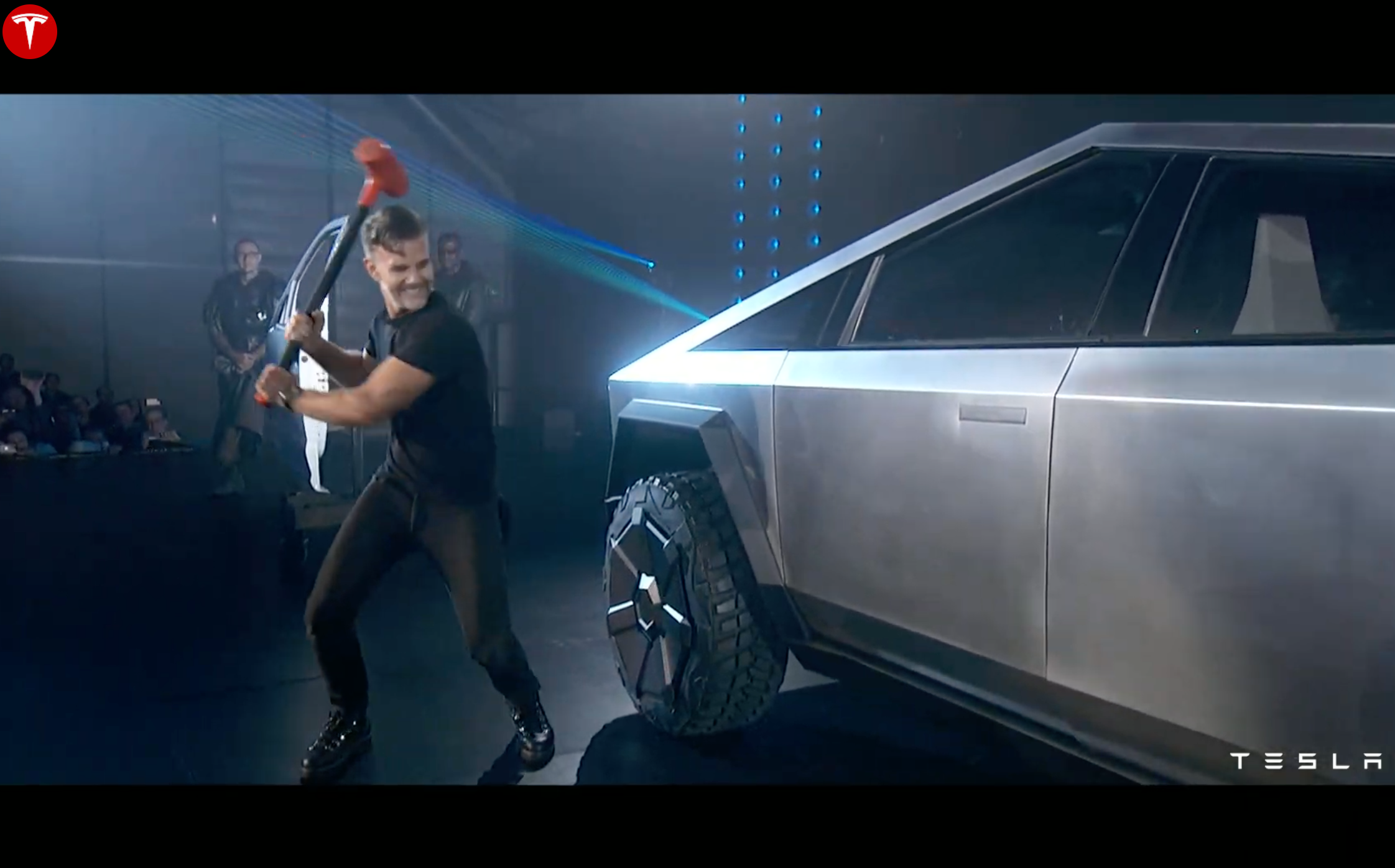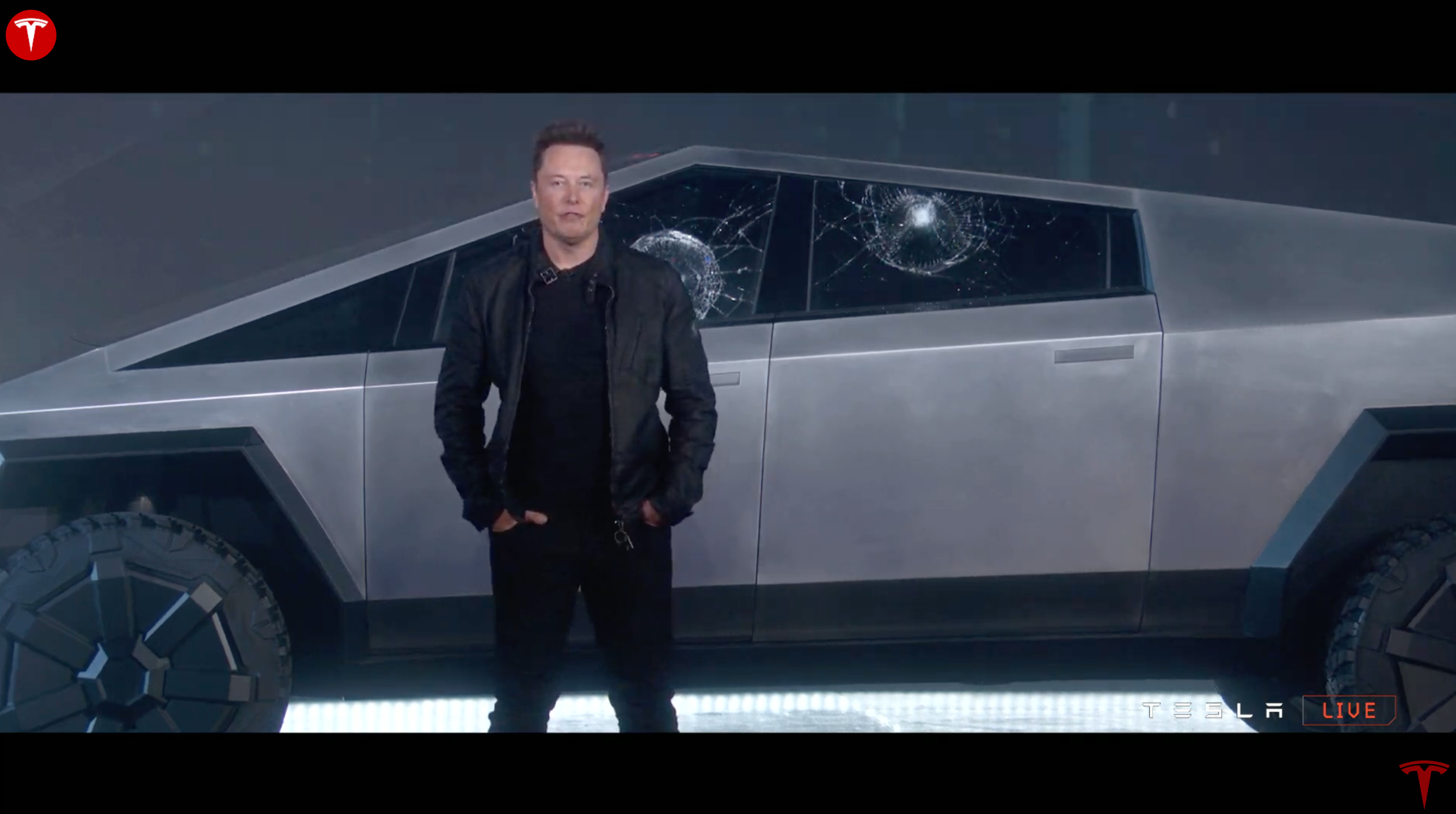Tesla's first pickup truck, the quirky and futuristic Cybertruck, could be the stepping stone into a new world. With an ultra-tough unibody construction, it ditches the dogma that's been at the foundation of truck building for decades. In the process, it must also prove to be safe. Very safe. Not only for the 146,000 people that've already wired cash for a build slot (the number keeps on growing) but for Tesla as a brand and for the future of the concept itself in a world where safety is a top priority.
Since Elon Musk unveiled Tesla's first truly utilitarian vehicle, the press as a whole, let alone the automotive one, has been looking at the Cybertruck from every angle, asking every possible question and looking at all sorts of markers to try and foresee whether it'll succeed or fail. Well, frankly, the failure of such a product can hide behind a multitude of elements and one of them is the way people perceive it. We already know it has pretty much divided people into two camps based on the way it looks, but we think it's key to earn people's trust when it comes to how safe it is - and this may not be easy given its appearance.
Safety is paramount for Tesla
Is the hype over yet? It's probably too soon to ask that, but we're trying to be pragmatic here in the cacophony of folks yelling about the Cybertruck's claimed 0-60 mph time of 2.9 seconds or how it can tow 14,000 pounds. Let's try and move away - if only for a bit - from the frenzy caused by the ludicrous numbers served steaming hot by the range-topping tri-motor 'Plaid' Cybertruck and look at another aspect that's very near and dear to Tesla - that of safety passengers and for any other pedestrian who is unlucky enough to be penciled in for a sudden close encounter with the slab-sided face of the Cybertruck.
This got us wondering. How will the sheet metal of Musk's latest motorized creation act in case of a crash? We all know a car's bumper, hood, and fenders bend and crumple to absorb the force of the impact because otherwise that force would be transferred inside the cabin to the passengers. We see that happen whenever someone decides to crash test a vintage car, the kind of car our grandparents liked because of its 'sturdy' construction. So, here's our first question: how will the cold-rolled alloy behave in a head-on collision? Or a side-on impact? And what about a small overlap collision?
Finally, it'll be interesting to find out what'll happen to that peaky roof of the Cybertruck in case of a roll-over accident. We guess the clever suspension and low center of gravity (for a truck) could mitigate the risk in most cases, but it can still happen. We all remember how the NHTSA (National Highway Traffic Safety Association) had a hard time in its consecutive attempts to roll the Model X and we're eager to see such tests performed with a Cybertruck. Will the roof flatten? This should make the glass shatter but then the glass is bulletproof and that means it's amazingly tough. And, considering the top of the roof acts like a cross member adding chassis rigidity, would a roll-over crash be a Cybertruck's biggest enemy?
Musk told us the pickup is "not fake tough" like other trucks out there. We explained here why Tesla employed cold-rolled stainless steel for the unibody chassis and the bodywork. The process is repeated 30 times to make the steel tougher as the amount of strain that the alloy is put through as it passes between the rollers and the number of successive compressions determines the hardness of the finished product.
At a time when only three out of almost a dozen pickups currently in production passed the IIHS' (Insurance Institute for Highway Safety) tests with flying colors, the Tesla could be in a class of its own not only in terms of performance but in the safety department as well. According to the IIHS, most two-row pickups "struggled to maintain their structure" which prompted the institute to claim that "clearly as a class, aren't offering state-of-the-art occupant protection".
The Honda Ridgeline was the only 2019 MY truck to earn a 'Top Pick' badge from the IIHS although the Ford F-150, Ram 1500, and Nissan Titan were all close to being 'Top Picks', only missing out because their headlights weren't bright enough (the F-150's were actually rated 'Poor'). According to USA Today, "of the five pickups that had a 'marginal' performance, four were General Motors vehicles – the Chevrolet Silverado 1500, Chevrolet Colorado, GMC Canyon and GMC Sierra 1500," while the Toyota Tundra was rated as 'Poor' overall. Also, Nissan's Titan wasn't even tested as it lacks frontal-collision warning systems or automated emergency braking, making it ineligible.
Truth be told, we don't know how much (if anything) will change between the Cybertruck prototype that was presented and the one hundreds of thousands of people will park in their garages come 2021. It's safe to assume, however, that some detail work will have to be done in the meantime in the name of safety, if for no other reason. But the changes can't be particularly major with many people buying into the Cybertruck craze (it costs only $100 to reserve one) because of how unapologetically different it looks. Change the aesthetics and much of its charm will disappear like smoke in the wind. Tesla, then, may actually be walking on the edge of the knife as it adds the finishing touches to the Cybertruck to make it roadworthy.


